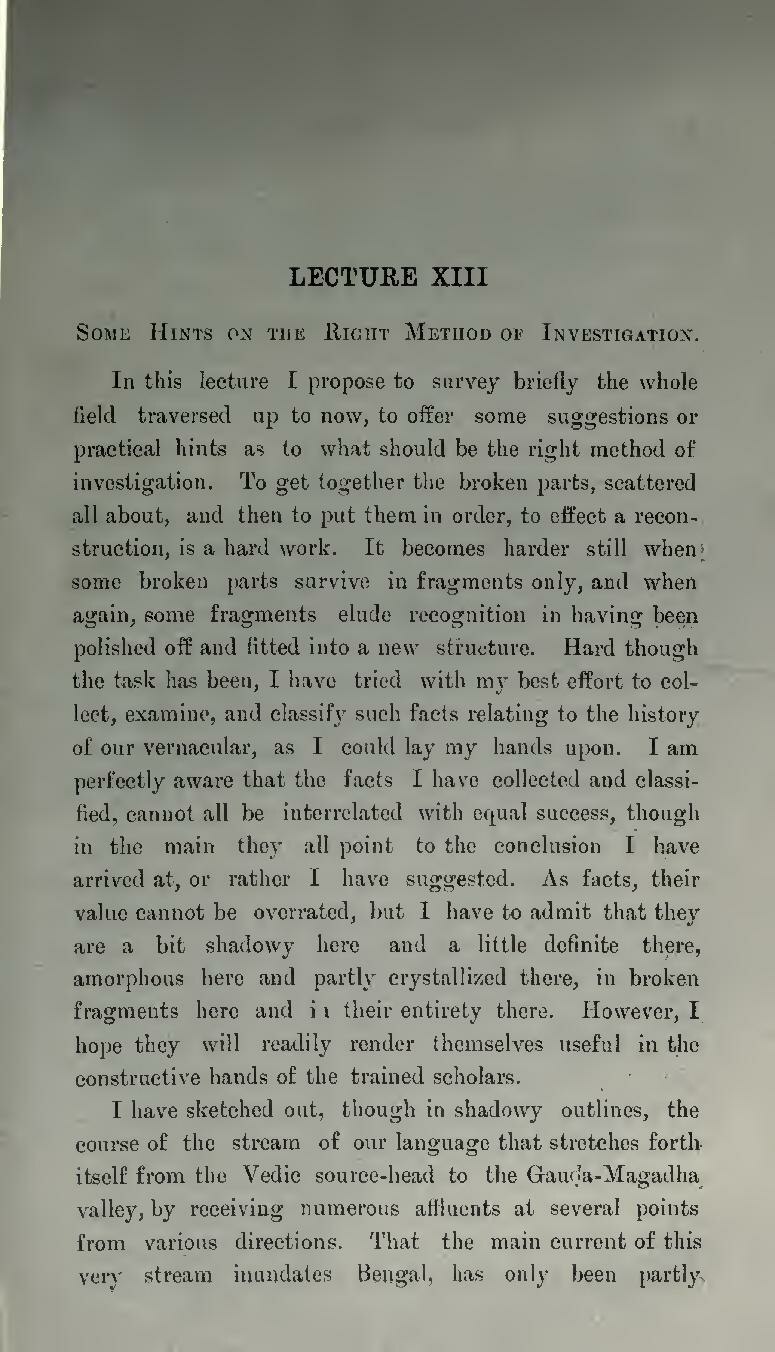LECTURE XIII
Some Hints on the Right Method of Investigation.
In this lecture I propose to survey briefly the whole field traversed up to now, to offer some suggestions or practical hints as to what should be the right method of investigation. To get together the broken parts, scattered all about, and then to put them in order, to effect a reconstruction, is a hard work. It becomes harder still when some broken parts survive in fragments only, and when again, some fragments elude recognition in having been polished off and fitted into a new structure. Hard though the task has been, I have tried with my best effort to collect, examine, and classify such facts relating to the history of our vernacular, as I could lay my hands upon. I am perfectly aware that the facts I have collected and classified, cannot all be interrelated with equal success, though in the main they all point to the conclusion I have arrived at, or rather I have suggested. As facts, their value cannot be overrated, but I have to admit that they are a bit shadowy here and a little definite there, amorphous here and partly crystallized there, in broken fragments here and in their entirety there. However, I hope they will readily render themselves useful in the constructive hands of the trained scholars.
I have sketched out, though in shadowy outlines, the course of the stream of our language that stretches forth itself from the Vedic source-head to the Gauḍa-Magadha valley, by receiving numerous affluents at several points from various directions. That the main current of this very stream inundates Bengal, has only been partly
